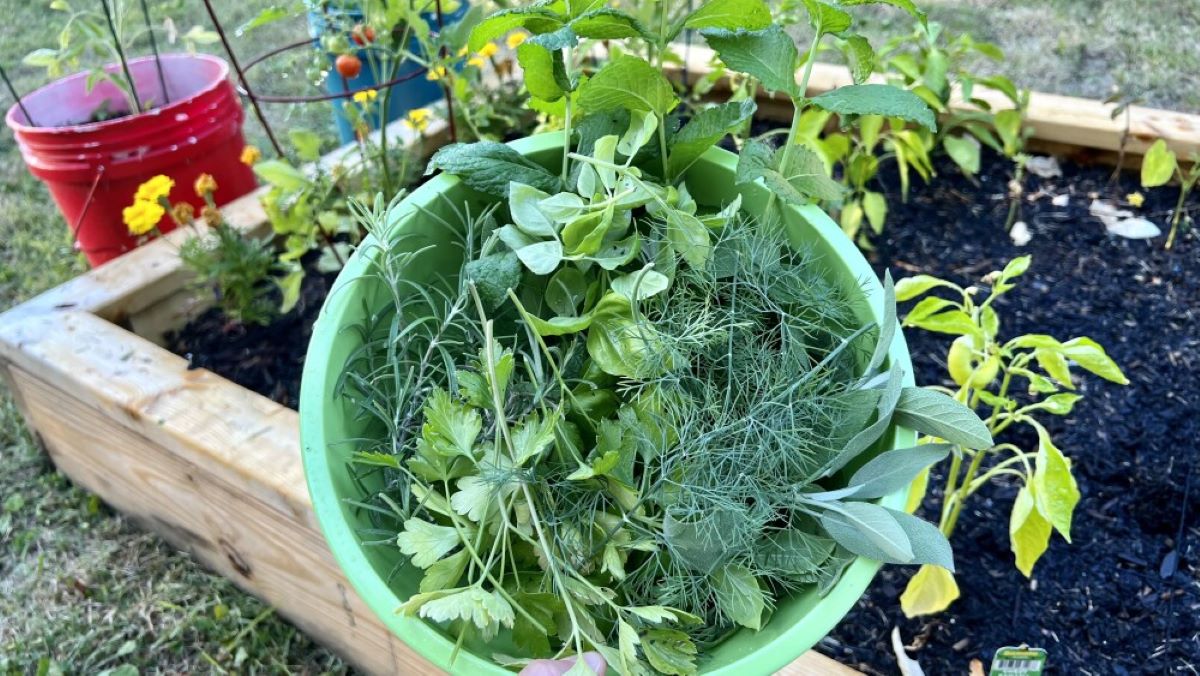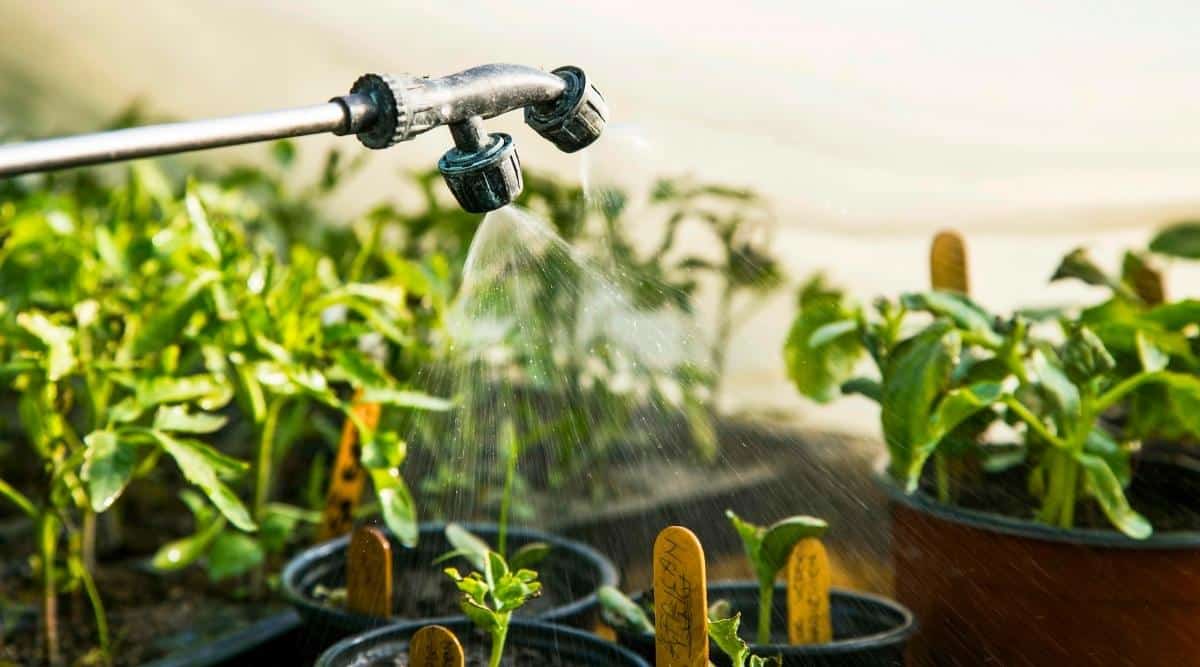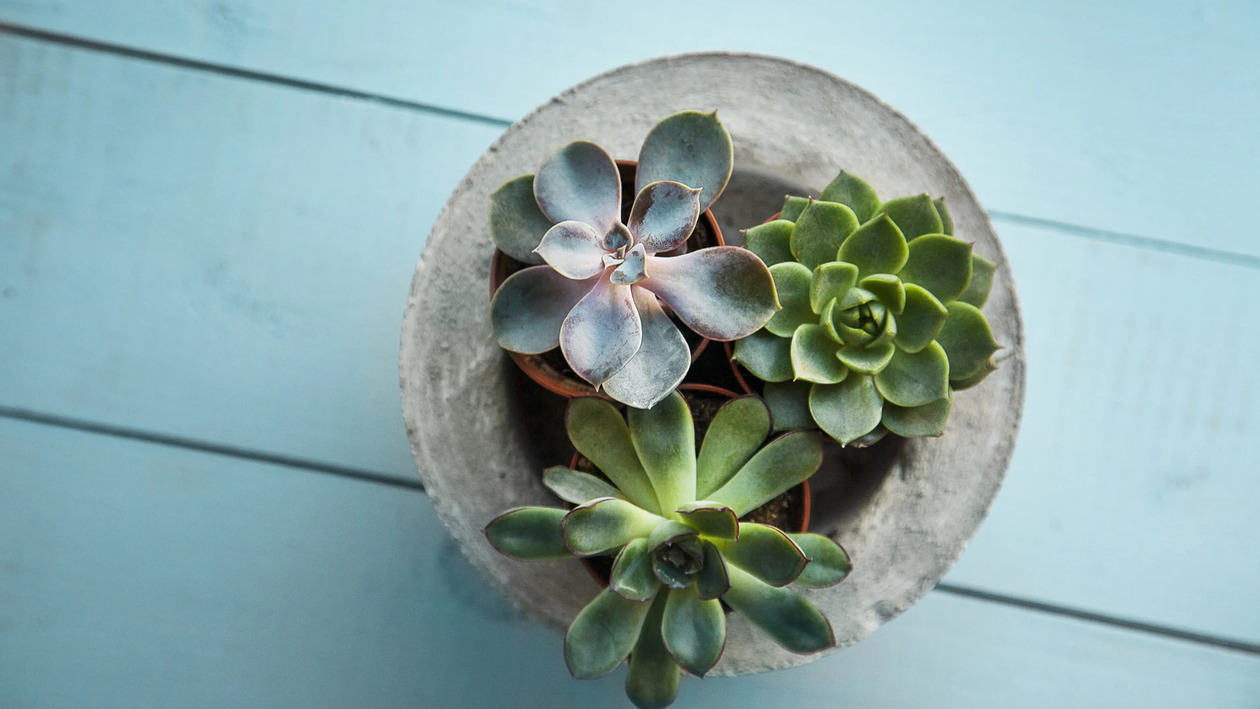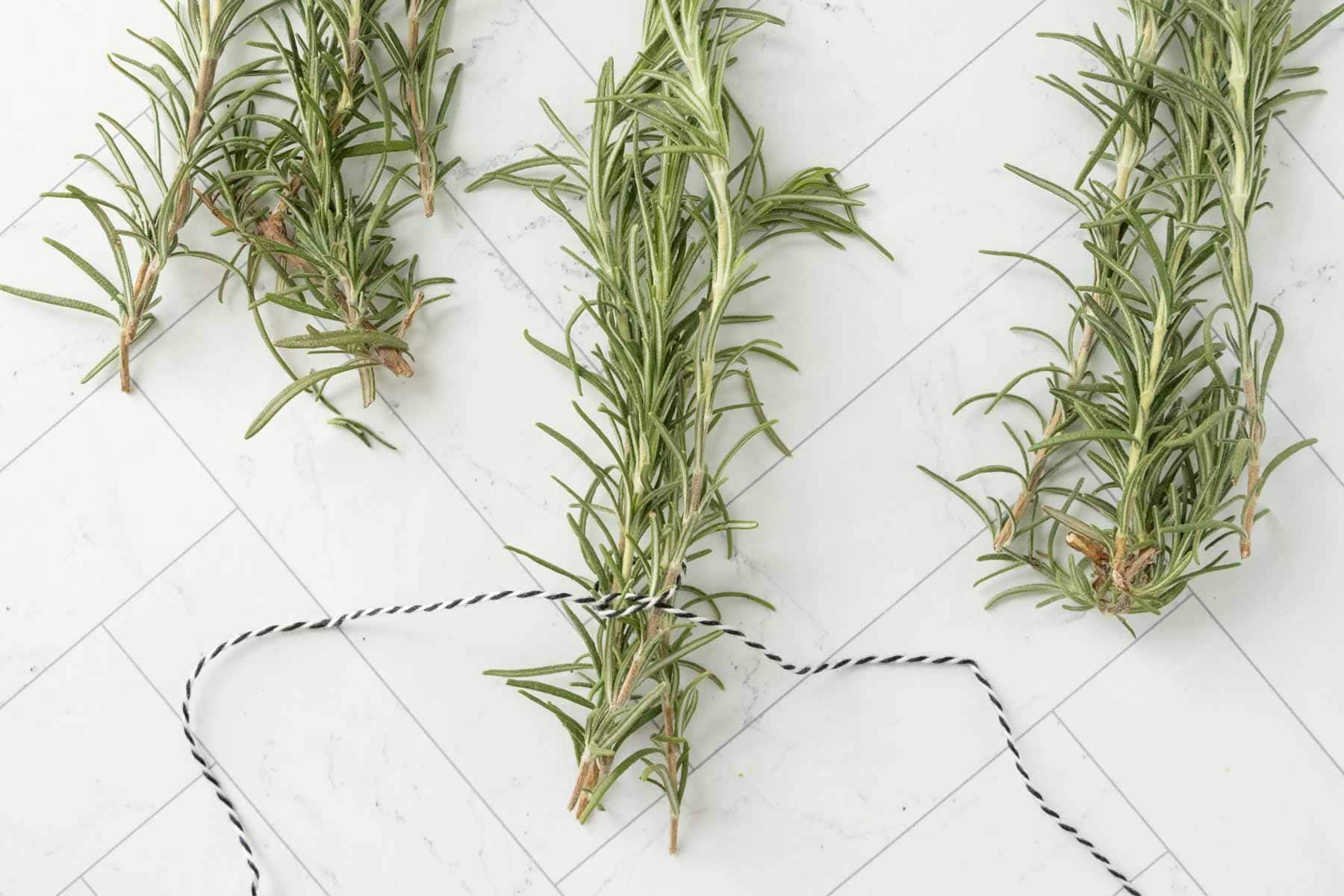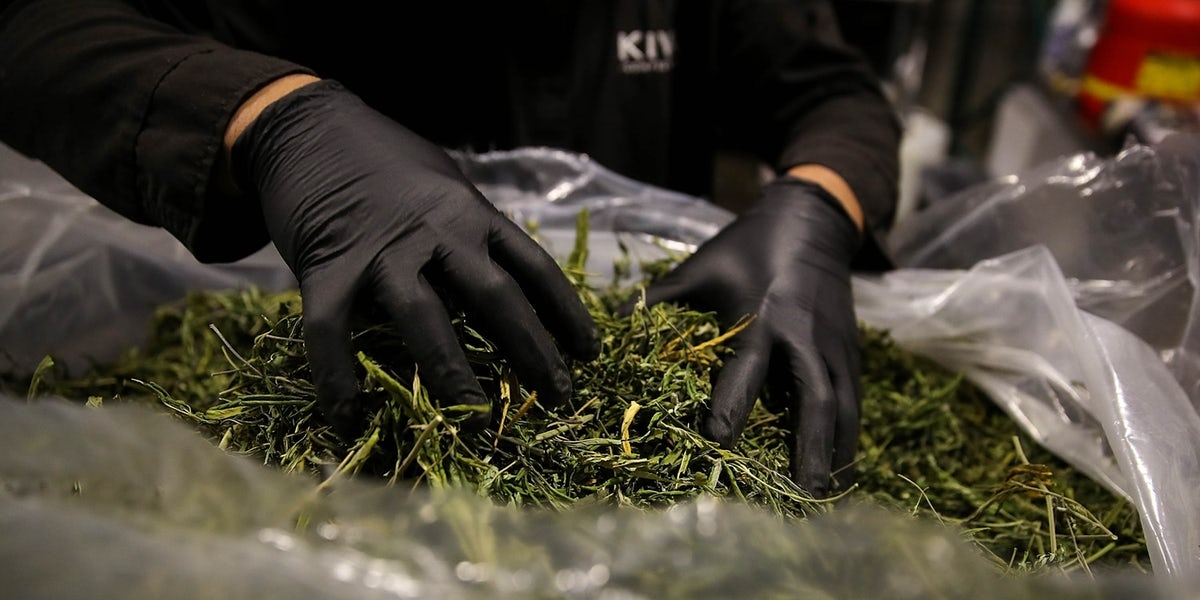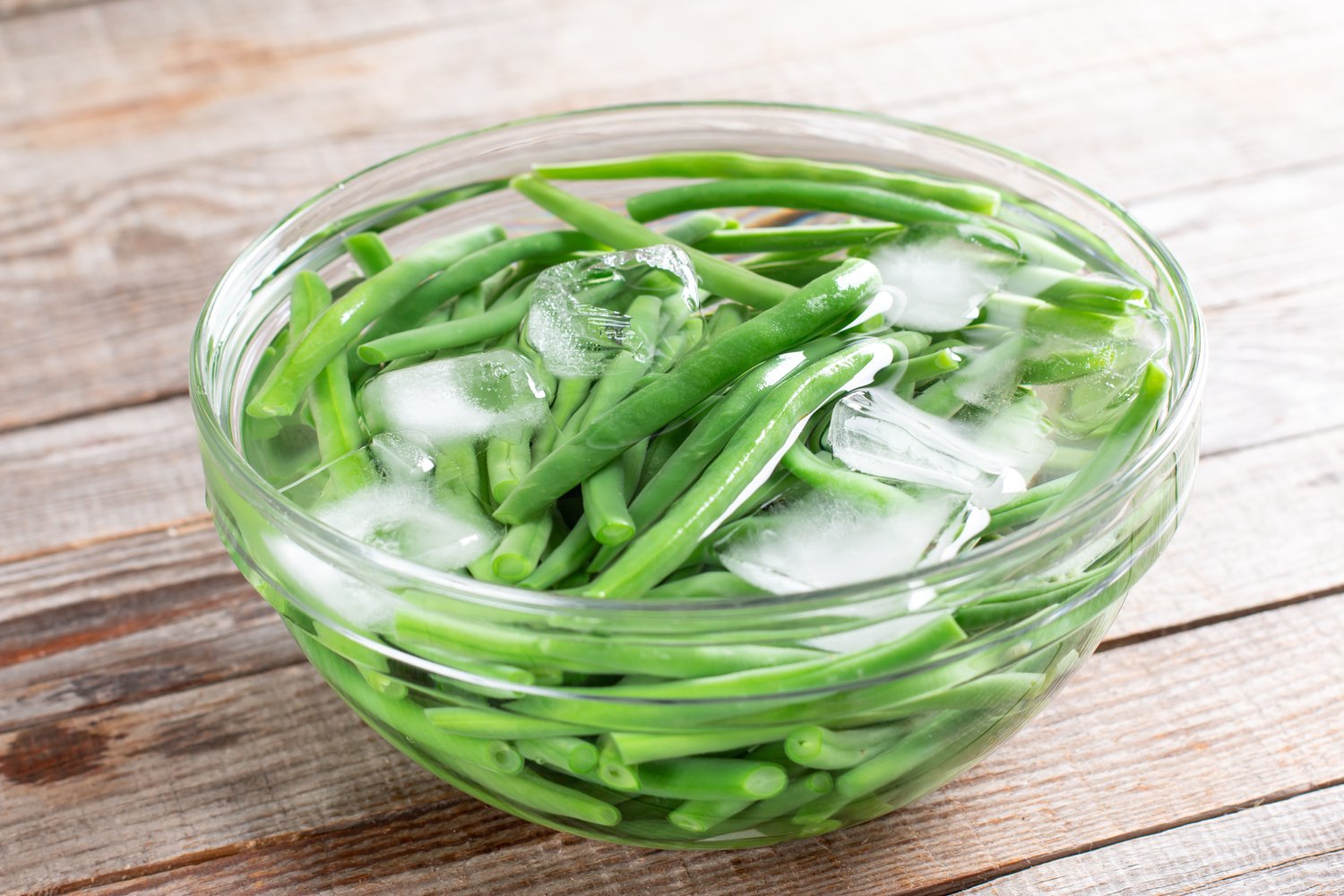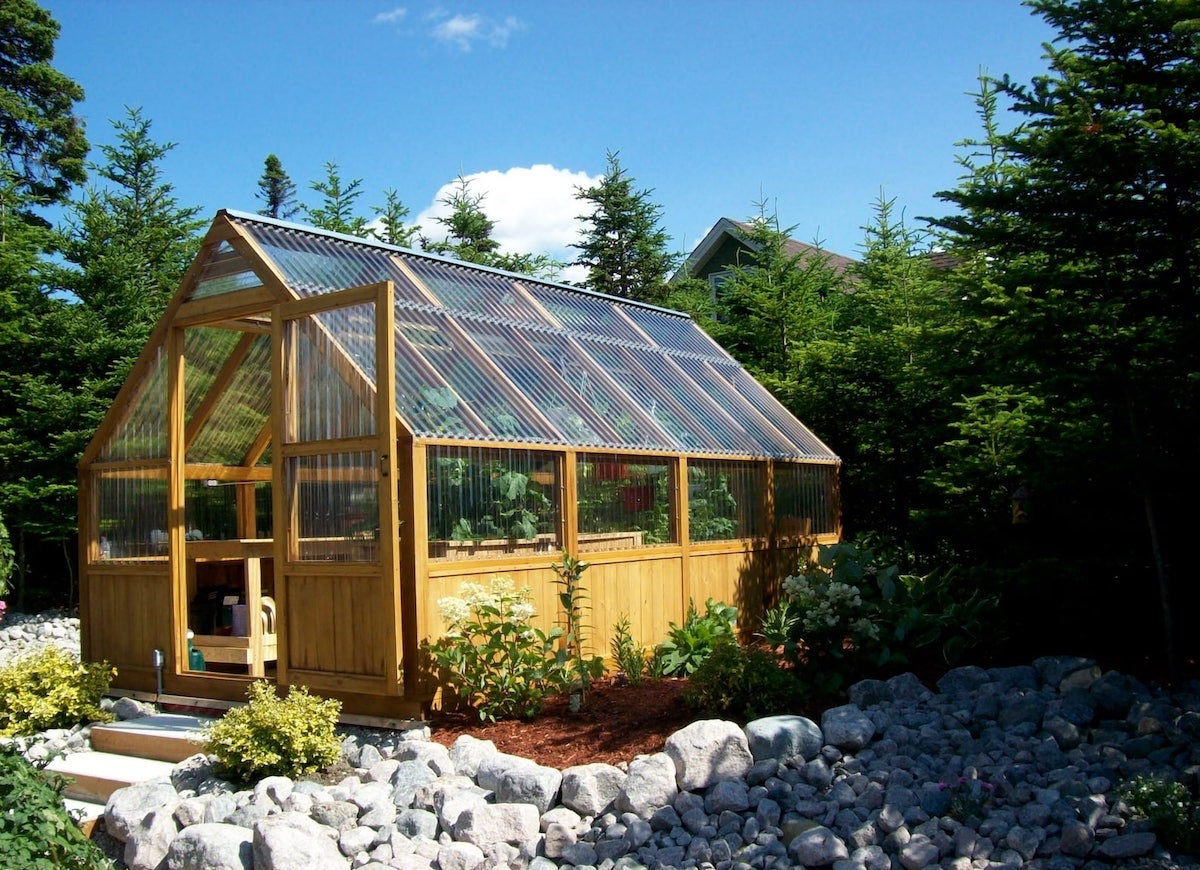Home>Types of Gardening>Edible Gardening>How Do You Harden Off Seedlings


Edible Gardening
How Do You Harden Off Seedlings
Published: January 2, 2024
Learn how to harden off seedlings for your edible gardening project. Follow these steps to ensure successful transition from indoors to the outdoor garden.
(Many of the links in this article redirect to a specific reviewed product. Your purchase of these products through affiliate links helps to generate commission for Chicagolandgardening.com, at no extra cost. Learn more)
Table of Contents
- Introduction
- What is hardening off?
- Why is hardening off important for seedlings?
- When should you start hardening off seedlings?
- How to harden off seedlings properly
- Step 1: Gradually introduce seedlings to outdoor conditions
- Step 2: Lengthen exposure time
- Step 3: Increase exposure to direct sunlight
- Step 4: Protect seedlings from extreme conditions
- Step 5: Monitor and adjust watering
- Step 6: Prepare for transplanting
- Common Mistakes to Avoid During the Hardening Off Process
- Conclusion
Introduction
Welcome to the world of edible gardening! Growing your own fruits, vegetables, and herbs can be a rewarding and fulfilling experience. Not only does it allow you to enjoy fresh and delicious produce, but it also gives you the satisfaction of knowing exactly where your food comes from.
One important stage in the process of nurturing your plants is hardening off your seedlings. This crucial step prepares your delicate young plants for the harsher outdoor conditions they will face once transplanted into your garden or containers.
But what exactly does hardening off mean? And why is it so important for seedlings? In this article, we will explore the answers to these questions and provide you with a comprehensive guide on how to successfully harden off your cherished seedlings.
So, if you’re ready to dive in and give your plants the best chance at thriving in the great outdoors, let’s get started!
What is hardening off?
Hardening off refers to the process of gradually acclimating young seedlings to the outdoor environment, preparing them for the transition from the controlled conditions of indoor growth to the unpredictable elements of the outside world.
When seedlings are initially started indoors, they are sheltered from temperature fluctuations, strong winds, direct sunlight, and other environmental factors that can cause stress and damage to the plants. While this protected environment is ideal for their early development, it also creates a dependency on these controlled conditions.
Hardening off is the practice of gradually exposing seedlings to outdoor conditions, allowing them to toughen up and build resilience. By gradually introducing them to these elements, you are essentially teaching your seedlings to adapt and withstand the fluctuating climates and variations in light intensity that they will encounter in your garden.
By subjecting them to gradual changes, you enable the seedlings to develop stronger stems, thicker foliage, and the ability to withstand temperature fluctuations. This process also helps the plant transition from a predominantly vegetative growth phase to a more reproductive stage, where flower and fruit formation can occur.
Essentially, hardening off is about strengthening your plants and ensuring their survival once they are transplanted into the ground or containers outdoors. It helps minimize transplant shock and increases the chances of your seedlings thriving in their new environment.
Now that you understand the importance of hardening off, let’s explore when and how to start this process to give your seedlings the best chance of success.
Why is hardening off important for seedlings?
Hardening off is a critical step in the growth and development of seedlings. It is important for several reasons:
1. Temperature adjustment: Seedlings raised indoors experience a relatively stable temperature, but outdoor temperatures can fluctuate significantly. By gradually exposing seedlings to outdoor temperatures, you help them adjust and develop hardy, resilient growth. This adjustment process prevents shock and stress when the seedlings are transplanted into the garden.
2. Exposure to sunlight: Indoor seedlings are typically grown under artificial grow lights, which do not provide the same intensity or quality of sunlight as natural sunlight. Hardening off gradually introduces seedlings to the direct sunlight, allowing them to adapt to the increased light intensity. This exposure readies the seedlings for photosynthesis and promotes stronger, healthier growth.
3. Wind resistance: Indoor-grown seedlings are sheltered from wind, which can be a significant stressor for delicate plants. Hardening off exposes the seedlings to gentle breezes, gradually strengthening their stems and roots. This process improves their ability to withstand stronger winds once transplanted outside.
4. Increased water retention: Indoor environments typically have higher humidity levels than outdoor conditions. Hardening off allows seedlings to adapt to lower humidity, helping them develop stronger root systems that can efficiently absorb and retain water from the soil. This reduces the risk of water stress and increases the plant’s ability to withstand dry periods.
5. Disease prevention: By hardening off seedlings, you reduce the risk of disease and pest infestations. Indoor environments can be more controlled and protected, but the outdoor environment exposes plants to a wider range of potential pests and diseases. Gradual exposure to outdoor conditions helps strengthen the plants’ natural defenses, making them more resistant to common garden threats.
Overall, hardening off is crucial for ensuring the long-term success and survival of your seedlings. It prepares them for the challenges they will face in the garden, increasing their chances of thriving and producing a bountiful harvest.
Now that you understand the importance of hardening off for seedlings, let’s explore when you should start this process.
When should you start hardening off seedlings?
The timing of when to start the hardening off process is crucial for the successful transition of your seedlings to the outdoor environment. It is generally recommended to start hardening off your seedlings about one to two weeks before your projected transplant date.
However, the exact timing may vary depending on various factors such as the specific plant variety, local weather conditions, and the recommended growing season for your region. Always refer to the seed packet or plant label for specific instructions or consult with local gardening experts for guidance.
In general, the hardening off process typically begins when the seedlings have developed a strong root system and at least two to three sets of true leaves. At this stage, they are mature enough to handle the outdoor conditions but still young and flexible enough to adapt to the changes.
It is essential to consider the local weather conditions during the hardening off period. Avoid starting the process during extreme temperature fluctuations, heavy rains, or strong winds. Opt for a stretch of mild, sunny days to give your seedlings the best chance of adjusting to the outdoor environment.
When determining the duration of the hardening off period, gradually increase the time spent outdoors each day. Begin with just a few hours in a shaded or protected area, gradually increasing the exposure time over the course of one to two weeks.
Remember, the goal is to gradually expose your seedlings to the elements, allowing them to acclimate without overwhelming them. By the end of the hardening off period, they should be able to withstand a full day outside without experiencing any adverse effects.
By timing the hardening off process carefully and considering the specific needs of your seedlings, you can ensure a successful transition from indoor to outdoor growing, setting them up for a healthy and productive future in your garden.
How to harden off seedlings properly
Properly hardening off your seedlings is essential to ensure their successful transition to the outdoor environment. Follow these steps to guide you through the process:
Step 1: Gradually introduce seedlings to outdoor conditions
Start by placing your seedlings outdoors in a sheltered location, such as a covered porch or a spot with filtered sunlight. Leave them out for a few hours during the mild parts of the day, gradually increasing the time over several days. This exposure allows the seedlings to adjust to the natural elements.
Step 2: Lengthen exposure time
As your seedlings begin to tolerate the outdoor conditions, start leaving them out for longer periods, including overnight, if the temperature remains above freezing. This step helps them adapt to the cooler evening temperatures and prepares them for spending the full day outside.
Step 3: Increase exposure to direct sunlight
Once your seedlings are accustomed to outdoor conditions, gradually expose them to direct sunlight. Begin with a few hours of morning or late afternoon sun, gradually increasing the time over several days. Be cautious not to expose them to strong midday sun initially, as this can scorch the leaves.
Step 4: Protect seedlings from extreme conditions
During the hardening off process, closely monitor weather forecasts. If there are predictions of extreme temperatures, high winds, or heavy rains, bring your seedlings inside or provide them with temporary protection. This step helps prevent damage and stress while they are still adjusting to outdoor conditions.
Step 5: Monitor and adjust watering
Pay attention to the moisture levels of the soil during the hardening off period. Outdoor conditions may require more frequent watering, as wind and sun can dry out the soil more quickly. Keep the soil evenly moist, but avoid overwatering, as this can lead to root rot or other issues.
Step 6: Prepare for transplanting
After the hardening off period is complete, and your seedlings have successfully adapted to outdoor conditions, they are ready for transplanting. Make sure the soil in your garden or containers is well-prepared and at the appropriate temperature for the specific plant variety. Transplant them carefully, ensuring proper spacing and providing any necessary support or protection.
By following these steps, you can effectively harden off your seedlings and set them up for success in their new outdoor home. Remember to take it slow, give your plants time to adapt, and provide ongoing care as needed throughout the hardening off process.
Step 1: Gradually introduce seedlings to outdoor conditions
The first and most crucial step in the hardening off process is to gradually introduce your seedlings to the outdoor environment. This gradual exposure helps them adjust to the differences in light, temperature, and air movement they will experience outside of their controlled indoor environment.
Start by placing your seedlings in a sheltered location outdoors, such as a covered porch or under a shade cloth. Choose a spot that offers filtered sunlight rather than direct sun exposure, especially during the hottest parts of the day.
Begin by leaving the seedlings outside for just a couple of hours during the mildest parts of the day, such as in the morning or late afternoon. This will allow them to start getting used to the outdoor air, temperature, and humidity levels.
Make sure to monitor the weather conditions during this time. Avoid exposing your seedlings to extreme temperatures, heavy rain, or strong winds, as this can cause stress and damage. If the weather is unfavorable, bring your seedlings indoors or provide temporary protection until conditions improve.
Over the course of several days, gradually increase the amount of time your seedlings spend outside. Add an hour or two to their outdoor exposure time each day, giving them a chance to adjust and acclimate to the outdoor environment.
While the seedlings are outdoors, continue to closely monitor their growth and overall health. Look for signs of stress, such as wilting or yellowing leaves, and take appropriate actions if needed. This could include adjusting the duration of their exposure or providing additional protection.
Remember to check the soil moisture regularly, as outdoor conditions may require more frequent watering. Keep the soil evenly moist, but take care not to overwater, as this can lead to root rot and other issues.
By gradually introducing your seedlings to the outdoor conditions, you are helping them build resilience and adaptability. This process sets the foundation for stronger and healthier growth, preparing them for the next steps in the hardening off process.
Step 2: Lengthen exposure time
Once your seedlings have become accustomed to spending a few hours outdoors each day, it’s time to move on to the next step of the hardening off process: lengthening their exposure time.
Gradually increasing the amount of time your seedlings spend outside allows them to adapt to the cooler evening temperatures and prepares them for spending the entire day outdoors. The goal is to help them build tolerance to the changing environment.
Monitor the weather conditions and choose days that are relatively mild and free from extreme temperature fluctuations. Ideally, start this step when the forecast predicts stable, mild weather for several consecutive days.
Begin by leaving your seedlings outdoors for a few extra hours each day. If they were previously spending two hours outdoors, increase that time to four hours. It’s important to choose the time of day when the temperatures are most favorable, typically early morning or late afternoon.
If the weather remains consistently warm and above freezing overnight, you can also start leaving your seedlings outside during the night. This exposes them to the cooler temperatures and allows them to gradually adjust to the temperature variations they will encounter in the garden.
Continue to closely observe your seedlings for any signs of stress or damage. Check for wilting, yellowing, or any other symptoms that might indicate they’re not tolerating the extended exposure well. If necessary, reduce the length of time they spend outside or provide temporary protection.
As the days progress, steadily increase the duration of outdoor exposure. Add an additional hour or two each day until your seedlings are spending the entire day and night outdoors. At this point, they should be able to tolerate the typical temperature ranges and environmental conditions of the garden.
Remember to water your seedlings as needed and provide appropriate care based on the specific requirements of your plants. Regularly inspect the soil moisture levels to ensure your seedlings are receiving adequate hydration but avoid overwatering.
By gradually extending the exposure time and allowing your seedlings to adjust to longer periods outside, you are ensuring their readiness for the next step in the hardening off process—increased exposure to direct sunlight.
Step 3: Increase exposure to direct sunlight
After your seedlings have successfully adjusted to spending extended periods outdoors, it’s time to move on to the next step of the hardening off process: increasing their exposure to direct sunlight.
While filtered sunlight is a good starting point, full direct sunlight is necessary for your seedlings to develop strong and healthy foliage. However, it’s important to introduce them to direct sunlight gradually to prevent sunburn and leaf damage.
Begin by placing your seedlings in a location where they will receive a few hours of direct sunlight each day. It’s best to choose either the early morning or late afternoon sun, as these times tend to be less intense than midday sun.
If your seedlings have been growing in a shaded area until now, the sudden transition to direct sunlight can be stressful. To ease this transition, you can use shade cloth or other materials to create a temporary shade structure. This will provide some sun protection while gradually increasing the seedlings’ exposure to direct sunlight over several days.
Every day, increase the duration of direct sunlight exposure by an hour or two. This gradual approach allows the seedlings to adapt to increased light intensity and strengthen their photosynthetic capabilities.
As the days progress, monitor your seedlings for any signs of sunburn or stress. If you notice any leaf discoloration, wilting, or other negative effects, reduce the amount of direct sunlight exposure and provide additional shade if necessary.
During this step, it’s crucial to keep a close eye on the moisture levels of the soil. Direct sunlight can cause the soil to dry out more quickly, so make sure to water your seedlings as needed to keep the soil evenly moist. Use your judgment and adjust watering frequency based on the specific needs of your plants and the prevailing weather conditions.
By gradually increasing the exposure to direct sunlight, your seedlings will develop stronger, thicker foliage and be better prepared for the intensity of full sun exposure in the garden. This step sets the stage for their successful transition to the outdoor environment and paves the way for healthy growth and productivity.
Step 4: Protect seedlings from extreme conditions
As your seedlings become more accustomed to the outdoor environment, it is important to protect them from extreme or unfavorable conditions that could cause stress or damage. Considering factors such as temperature fluctuations, strong winds, heavy rains, and even pests is crucial during this phase of the hardening off process.
Monitor the weather forecasts closely and be aware of any predicted extreme temperatures, especially frost or heatwaves. If temperatures are expected to drop below the tolerance of your seedlings, bring them indoors overnight or provide temporary protection such as covering them with a lightweight fabric or a cold frame.
In cases of heavy rain or wind, consider providing additional shelter or moving your seedlings to a more protected location. Excessive rain can lead to waterlogged soil, which may cause root damage or disease. Strong winds can break fragile stems and damage delicate foliage.
Pests can also pose a threat to your seedlings during the hardening off period. Monitor your plants for any signs of insect or pest activity, and take appropriate measures such as applying organic pest control methods or physical barriers to protect them from damage.
By keeping an eye on the weather conditions and taking proactive steps to shield your seedlings from extreme situations, you can ensure their continued health and well-being during the hardening off process.
Remember to continue adjusting the watering schedule according to the specific needs of your seedlings and the prevailing weather conditions. Strike a balance between providing enough moisture to keep the plants hydrated while avoiding overwatering, which can lead to root rot and other issues.
Throughout this step, remain vigilant in observing your seedlings for any signs of stress or damage and take immediate action to address any issues. A vigilant and proactive approach will help safeguard your seedlings and set them up for a successful transition into their permanent outdoor growing space.
Step 5: Monitor and adjust watering
Proper watering is crucial during the hardening off process as it ensures that your seedlings receive the right amount of moisture to support their growth and transition to the outdoor environment. Monitoring and adjusting watering practices based on the specific needs of your seedlings and the prevailing weather conditions is key to their success.
During the initial stages of hardening off, when your seedlings are gradually being introduced to outdoor conditions, keep the soil consistently moist. Check the moisture level regularly by inserting your finger into the soil. If it feels dry up to the first knuckle, it’s time to water.
Water your seedlings thoroughly and evenly, ensuring that the water reaches the root system. Avoid watering the foliage, as wet leaves can increase the risk of diseases. Consider using a watering can or a gentle spray attachment on a hose to provide a fine and even distribution of water.
As the hardening off process progresses and your seedlings become more acclimated to outdoor conditions, adjust the watering schedule based on the weather. During periods of high heat or strong winds, your seedlings may require more frequent watering as the soil can dry out more quickly. Conversely, during periods of cooler temperatures or increased humidity, watering may need to be reduced to prevent overwatering.
Remember that overwatering can be just as harmful to your seedlings as under watering. It can lead to root rot and other issues. To prevent overwatering, ensure that the soil has adequate drainage and avoid letting the seedlings sit in standing water. Enhancing soil drainage by incorporating organic matter into the soil can be beneficial in preventing waterlogged conditions.
Avoiding water stress is essential throughout the hardening off process. Too much or too little water can cause stress to the seedlings, making them more susceptible to diseases and other problems. By paying close attention to the moisture needs of your seedlings and adjusting the watering accordingly, you will support their healthy development and increase their ability to thrive in the outdoor environment.
As always, visually inspect your seedlings for any signs of stress, such as wilting or yellowing leaves. These can be indications of either overwatering or underwatering. Adjust your watering practices accordingly, keeping in mind the specific requirements of your plants and the prevailing weather conditions.
By monitoring and adjusting the watering regimen during the hardening off process, you are providing your seedlings with the ideal moisture levels to support their growth and ensure their successful transition to the outdoor environment.
Step 6: Prepare for transplanting
Congratulations! You’ve successfully gone through the hardening off process with your seedlings, and now it’s time to prepare them for transplantation into their permanent outdoor growing space. Proper preparation for transplanting ensures a smooth transition and sets your seedlings up for continued growth and development in the garden.
Start by selecting a suitable location in your garden or containers for transplanting. Consider factors such as sunlight exposure, soil quality, and proper spacing requirements for the specific plant variety. Prepare the soil by removing any weeds or debris and incorporating organic matter to improve its fertility and structure.
Before transplanting, make sure the soil temperature is appropriate for the specific plants you are working with. Some plants thrive in warmer soil, while others prefer cooler conditions. Refer to the seed packet or plant labels for guidance on the optimal soil temperature for transplanting.
To remove the seedlings from their containers, gently loosen the soil around the root system. Carefully lift the seedlings, holding them by the leaves or the root ball, and avoid tugging or pulling on the delicate stems.
When planting your seedlings, dig a hole that is slightly larger than the root ball. Place the seedling in the hole, ensuring that it is at the same depth it was growing in the container. Backfill the hole with soil, gently pressing it down to eliminate any air pockets.
Provide support, such as stakes or cages, for tall or vining plants to prevent them from falling or being damaged by wind. Mulch around the base of the plants to help retain moisture, suppress weeds, and regulate soil temperature.
After transplanting, water your seedlings thoroughly to help settle the soil around the roots and provide hydration. Ensure that the water reaches the root zone without wetting the foliage excessively, as damp leaves can invite diseases.
Continue to monitor your transplanted seedlings in the days and weeks following transplantation. Keep an eye out for any signs of stress or transplant shock, such as wilting or yellowing leaves. Provide appropriate care, including regular watering, protection from extreme weather conditions, and any additional support or maintenance that your specific plants may require.
By properly preparing for transplanting and providing the necessary care after transplantation, you are setting your seedlings up for a successful start in their new outdoor growing space. With continued attention and care, your plants will thrive and reward you with bountiful harvests and beautiful displays.
Common Mistakes to Avoid During the Hardening Off Process
While the hardening off process is crucial for the successful transition of your seedlings to the outdoor environment, there are several common mistakes that gardeners may inadvertently make. Being aware of these mistakes can help you avoid potential pitfalls and ensure the best outcome for your plants:
1. Skipping the hardening off process
One of the biggest mistakes is skipping or rushing through the hardening off process. This can result in seedlings experiencing shock and stress when exposed to the sudden changes in temperature, sunlight intensity, and outdoor conditions. Take the time to gradually introduce your seedlings to the outdoor environment to give them the best chance of successful acclimation.
2. Starting the process too early or too late
Timing is crucial in the hardening off process. Starting too early when temperatures are still too cold, or starting too late when the seedlings have become too established and sensitive, can hinder their ability to adjust properly. Follow the recommended guidelines for your specific plants and adjust based on the local climate and weather patterns.
3. Exposing seedlings to extreme conditions
In the effort to toughen up your seedlings, it’s important to expose them gradually to the elements. Exposing them to extreme temperatures, strong winds, heavy rains, or intense sunlight too early can cause stress and damage. Monitor the weather forecast and protect your seedlings from unfavorable conditions to prevent setbacks.
4. Overwatering or underwatering
Proper watering is critical during the hardening off process. Overwatering can lead to waterlogged soil and root rot, while underwatering can cause stress and wilting. Monitor the moisture levels of the soil and adjust watering accordingly to provide adequate hydration without saturating the roots.
5. Ignoring pest and disease prevention
Outdoor environments bring potential exposure to pests and diseases. Neglecting pest and disease prevention measures during the hardening off process can leave your seedlings vulnerable. Implement organic pest control methods, monitor for any signs of infestation, and take early action to prevent damage.
Being mindful of these common mistakes will help you successfully navigate the hardening off process and give your seedlings the best chance of thriving in their new outdoor home. By providing the proper care and attention, you will set the foundation for healthy growth and a bountiful harvest.
Conclusion
The hardening off process is a vital step in ensuring the successful transition of your seedlings from the controlled indoor environment to the unpredictable outdoor conditions. It involves gradually exposing your seedlings to the elements, such as temperature fluctuations, direct sunlight, wind, and other outdoor factors, to help them build resilience and adaptability.
By following the proper steps of hardening off, you can minimize transplant shock, increase the plants’ ability to withstand outdoor conditions, and promote healthy growth and productivity in your garden. It is important to gradually introduce your seedlings to the outdoor environment, lengthen their exposure time, increase their exposure to direct sunlight, and protect them from extreme conditions.
Monitoring and adjusting the watering schedule, along with considering pest and disease prevention, are crucial elements of the hardening off process. Providing your seedlings with the right amount of water and safeguarding them against potential threats will support their overall health and well-being.
Remember, each plant and growing situation is unique, so it’s important to consider the specific needs of your seedlings and adapt the hardening off process accordingly. Pay attention to their response and make adjustments along the way to ensure the best possible outcome.
With patience, care, and attention to detail, your seedlings will be well-prepared to thrive in their new outdoor environment, providing you with a bountiful and successful gardening experience. So take the time to properly harden off your seedlings, and enjoy the rewards of a healthy and flourishing garden.

